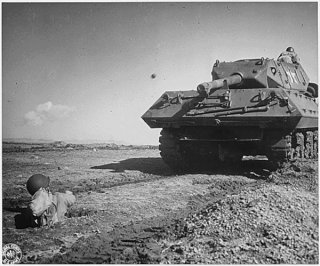Paper Tiger or Killer: What the Army Learned From Tank Destroyers
Tank-destroyers have a mixed record, demonstrating both usefulness as well as obsolescence in World War II.
The ultra-lightly-armored M18, with its unexceptional gun, had the best ratio of kills to losses for any vehicle type in the Army!
Why? Ultimately, it may come down to how tank-destroyers were employed, even though it was not the manner intended by Army strategists. While Sherman tank units sometimes embarked on risky assaults and unsupported rapid advances, tank-destroyers usually deployed in support of combined arms task forces with infantry.
This cooperation with friendly forces meant they showed just where they needed to be, spotted the enemy first and got off the first shot. And being the first to shoot usually determined the outcome of armored engagements in World War II, regardless of the quality of the vehicles involved.
Tank-destroyers also taught the Army not to over-specialize. There was no need for multiple classes of tanks that were strong in one respect and weak in another. The post-war concept of the main battle tank embraced this idea to the fullest.
As such, the U.S. tank destroyer branch constitutes one of the most curiously successful failures in U.S. military history.
This first appeared in WarIsBoring here. This first appeared earlier and is being reposted due to reader interest.
Image: Wikimedia.

